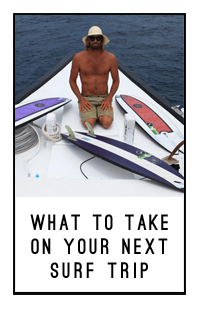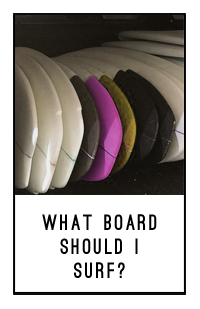The secret to surfing better
How riding different equipment can make you a better surfer
I come from the mind set of “surf everything”. This has always been my way, owning a quiver of boards that are completely different from each other.
At first it was just a way to get me out in the water on days that hardly had a wave and my shorty wouldn’t cut it... having a longboard opened my mind and my ability to surf most of the time, regardless of the conditions.
That evolved into getting a fish, then a single fin egg shaped board, than a midlength with flex fin, then pulling out older 80’s style shortboards, onto hybrids, mini Simmons, etc etc.
I found that the more alternative my quiver was, the more fun I was having on any given day, and the more I was surfing in general.
I would call up buddies who were stuck in the 6’0 x 18 7/8 x 2 1/4 squash tail rut, only motivated to get wet when the waves were good quality and decent size, which does not happen all that often. And than to top it off, they would normally surf the same spot and bust the same maneuvers wave after wave.
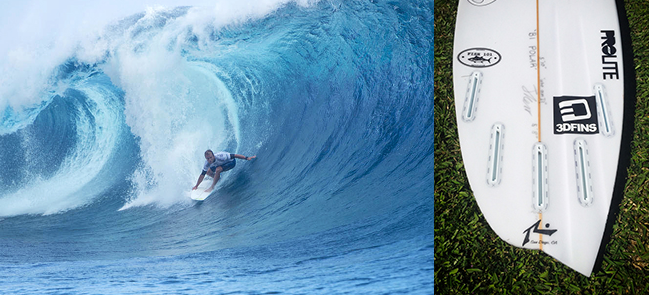 Josh Kerr seems to know a thing or two about surfboards. He works closely with Rusty Surfboards and is not afraid to switch it up even when it matters.
Josh Kerr seems to know a thing or two about surfboards. He works closely with Rusty Surfboards and is not afraid to switch it up even when it matters.
Surf Everything
Owning such a diverse quiver not only gets you out in the water more, it teaches you to look at waves in a different way, which can in turn translate into how you surf different boards...including your shorty.
A prime example is surfing a 20 something pound
log. The weight combined with the long rail line and general size of the board makes it that you have to surf with the wave a little more than surfing the wave. You have to look farther down the line to anticipate sections so you have the time to react and move the behemoth.
Get a good feel for this, and you can take that approach to your shortboard.
Sure you can still attack the wave, but you might even slow you surfing down a notch and get a better feeling for the sweet spot on a wave where you can easily generate your speed without having to pump the board so much.
Your eye also becomes trained to look a little farther down the line, not to spend that time setting up your move, but more so that you can link your maneuvers better, hit that section, but have a good idea already of what the next section is going to be like.

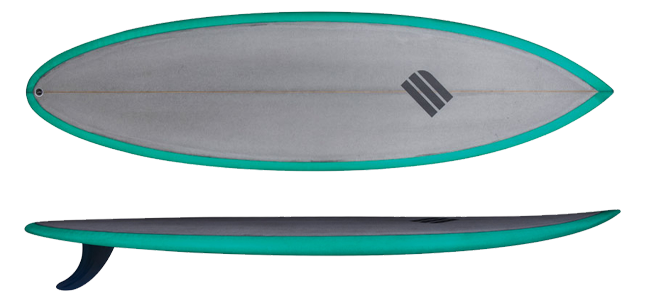 A classic Log by 1 DA Shapes and single fin goodness with Emery Surfboards.
A classic Log by 1 DA Shapes and single fin goodness with Emery Surfboards.
Test out a Hybrid/Concept
Instead of a longboard, you can also try a
single fin or bonzer style shortboard, either hybrid shape or performance.
You get a whole new sensation of trim and rail work as opposed to your standard thruster. You may not be able to whip turns around as much as they won't have the same release, but you would be surprised by their performance.
These boards will almost produce their own speed when you find the sweet spot on both the board and the wave. Unlike the trusty thruster where you have to pump to engage the fins and make them drive.
Your turns will be more drawn out and you will learn how to use your rail more. This will translate back to your ability to surf and perform on other boards, having that feeling of trim and knowing how to engage your rails instead of relying on your fins.
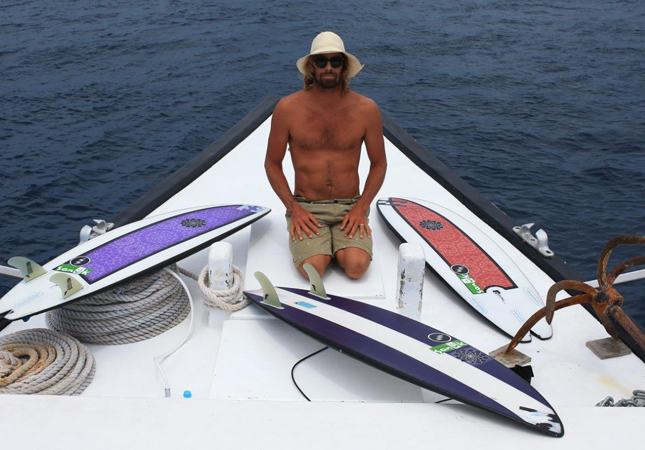 Dave Rastovich and a quiver of fish inspired twin fins by Gary McNeill Surfboards.
Dave Rastovich and a quiver of fish inspired twin fins by Gary McNeill Surfboards.
When to use a fish
One style of board that everyone should have in their quiver whether you are a logger by nature or shortboarder, is a
Fish Surfboard.
Now, the term fish has been taken over by many just to simply mean their slightly shorter, wider board for smaller conditions. I am actually talking about a good twin keel, deep swallow tail fish. Wider and thicker, but shorter than your normal board.
But don’t be shy to surf these boards when it is pumping either.
A board like this will teach you to take new lines and approach surfing in a whole new light. They work in anything from knee high and mushy, to overhead and barreling. They also show you plenty of down the line speed, but force you to control it.
The deep swallow tail acts like two separate pin tails (depending on how much rail is in the water at the time), can fit in the pocket of a wave wonderfully, and can gouge carving turns displacing a ton of water out the back of the wave. The wide tail and twin keels keep it loose when it needs to be, but loves to be surfed off the rail and fast down the line.
This translates well over to your shortboard as a fish, like your shortboard, wants to be pumped to generate speed, but also teach you how to harness and control that speed.
Get your feet moving
The cool thing is that a lot of boards want you to move around on the deck depending on the part of the wave you are on.
That is an obvious case with classic longboards where you are literally walking up and down the board either perched up at the tip when nose riding, surfing from the middle finding that “trim” or dropping back to the tail for a cutback. This can carry over to mid lengths and shorter boards, including performance shortboards.
Bringing your back foot up towards the middle helping to shift the weight forward a touch or consolidating your center of gravity with your feet close together.
You see it a lot on alternative surfboards, but you can even notice it with experienced surfers on high performance shortboards. When they are driving through a barreling section, you will often notice their back foot is forward of the tailpad, helping to bring that weight forward a touch, only to drop it back all the way to the end of the tail pad to crack a nice big turn.
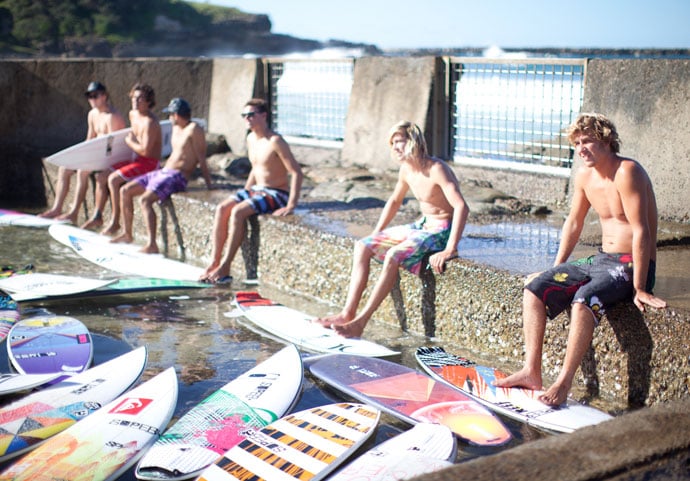 The SUPERbrand team with some R&D going down.
The SUPERbrand team with some R&D going down.
Experiment with your equipment
The point is, that it doesn’t really matter what variety of boards you are surfing, just try to mix it up now and then to freshen up your game. Some boards love riding high and tight on the wave, some like to generate speed by coming off the bottom and springing into action.
Even a simple fin change can help to transform your surfing.
If you really are adamant on surfing HPSB (high performance shortboards) grab yourself a quad every now and then. Or better yet, make sure your next order is a
five fin surfboard so you can surf one board as a thruster or a quad.
You will notice how the board changes from down the line speed and carving turns as a quad, to having to pump more for your speed, but having more control and tighter arch’s with your turns on a thruster.
Surfing the board as a quad will teach you to use your rail more and draw out your turns, bring that knowledge back to you thruster set up and you don’t always have to slash your turns... it will help smooth out your overall surfing.
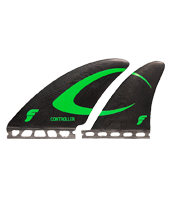
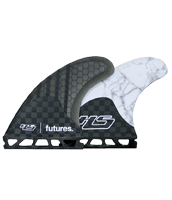
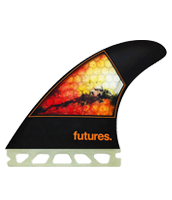
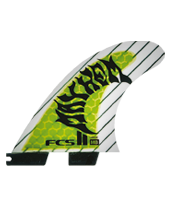
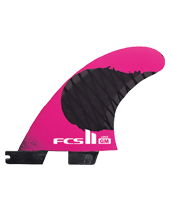
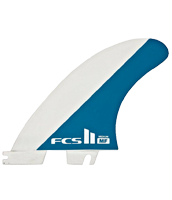 Switching your fins out is an easy way to surf something new without breaking the bank. Understanding which surfboard fins to use can help develop your skill level.
Switching your fins out is an easy way to surf something new without breaking the bank. Understanding which surfboard fins to use can help develop your skill level.
Switch up your fins
Let’s say you only have one board with removable fins, but only set up as a thruster. Simply change out the fins that you have.
If you normally have fins with a swept back arch to them, allowing for carving turns, put a fin set that is more upright that requires you to change your approach to turning and the wave in general. Put in fins with a wider base, giving you more drive down the line and learn to harness that power and leverage your weight when you need to turn.
Bring this knowledge back to your smaller fins and really start laying into gouging turns with your rail and use the catch and release with your fins to your advantage. We have a wide range of
Surfboard Fins available with a fin template and construction to suit any surfer and any surfboard.
In Summary
Whatever it is you do, try not to stick with one board or one set up all the time.
Having a wide variety of different boards increases the number of surf able days you have, as well as making you a better surfer. Some people may claim that it’ll hurt your surfing as you will have to re-adapt back to your go to board, but we disagree.
Experimenting will teach you how to adapt to any style of board and bring new approaches to old equipment.
Yes,
finding the right board to suit your experience and ability is crucial for progression, but being able to adapt to how a board wants to be surfed is just as crucial if not more.
Build your quiver, surf everything and go have some fun!
Make sure you check out the Board Engine to find a range of boards all made in Australia by professional shapers at the top of their crafts. Email [email protected] with your details for a detailed report of board recommendations for you.
Looking for more articles? Check out some of our recent articles below:
